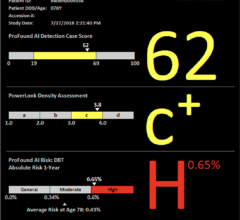
Getty Images
March 29, 2022 — “The Fundamental Flaws of the Canadian National Breast Screening Study (CNBSS) Trials: A Scientific Review,” authored by Seely, et al and published on March 29, 2022 in the Journal of Breast Imaging, reinforces criticism directed towards the CNBSS trials. Of the eight randomized controlled trials studying the efficacy of screening mammography, the CNBSS trials are the only outliers that failed to demonstrate a mortality reduction. In a separate article, “Errors in conduct of the CNBSS trials of breast cancer screening observed by research personnel,” interviews from 29 study personnel call into question the integrity of the trials. The eyewitness statements highlight critical study design flaws and a lack of adherence to standards for randomized controlled trials.
Importantly, CNBSS personnel respondents confirmed that women with symptoms of breast cancer (therefore not eligible for screening) were systematically recruited to the study. Moreover, some symptomatic women were not randomized and instead preferentially assigned to the screening mammography arm of the study, rather than the usual care arm (i.e., no mammogram). By preferentially placing women with breast cancer symptoms into the mammography arm, the number of advanced cancers in the mammography arm was inflated and the mortality benefit of mammography screening was diminished.
Furthermore, respondents reported (1) a lack of training for technologists causing poor patient positioning, (2) no breast imaging experience for radiologists resulting in inconsistent mammographic interpretations, (3) substandard imaging technology resulting in poor image quality, and (4) no established standards to evaluate suspicious mammographic findings. In fact, citing reservations about early mammography technology, some surgeons were unwilling to perform biopsies in asymptomatic women with suspicious mammographic findings. The failure to diagnose breast cancer at the earliest time point possible further decreased the mortality benefits of mammographic early cancer detection from the CNBSS trials. Given these shortcomings, the results of the CNBSS trials (CNBSS1 and CNBSS2) should not be included in the decision making regarding national screening guidelines. The Society of Breast Imaging urges policy makers and prominent women’s health organizations to dismiss the results of the CNBSS when shaping policy and establishing recommendations for screening mammography.
For more information: www.sbi-online.org


 July 29, 2024
July 29, 2024 








